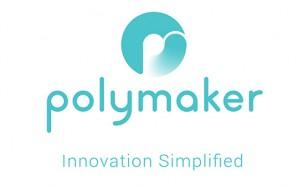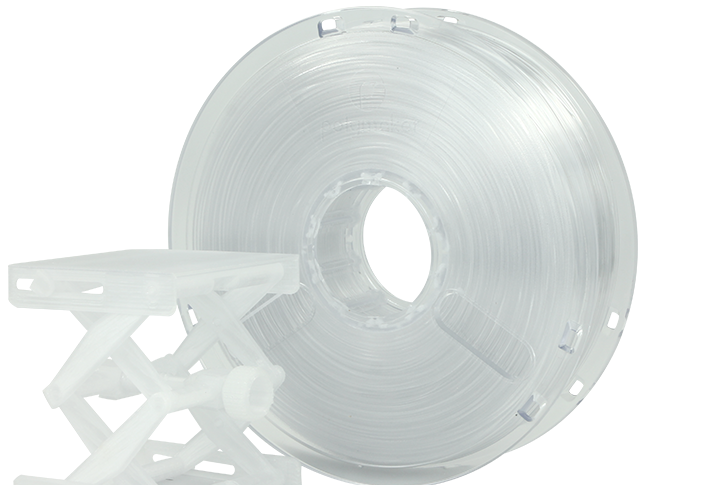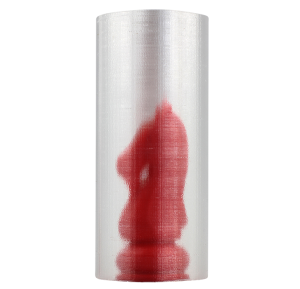 Since the 1950s one of the world’s most widely used thermoplastics has been polycarbonate because it is strong, rigid and easy to heatform. It is used in industrial applications as diverse as household appliances, dishes, automotive parts, DVDs, security glass and even water bottles. The material is also ideally suited to injection molding, mainly because once cooled it is remarkably strong, and can bend and deform without breaking or cracking. Unfortunately it hasn’t been widely used for 3D printing applications, mainly because its high melting temperature means that only expensive and specialized 3D printers can properly work with it.
Since the 1950s one of the world’s most widely used thermoplastics has been polycarbonate because it is strong, rigid and easy to heatform. It is used in industrial applications as diverse as household appliances, dishes, automotive parts, DVDs, security glass and even water bottles. The material is also ideally suited to injection molding, mainly because once cooled it is remarkably strong, and can bend and deform without breaking or cracking. Unfortunately it hasn’t been widely used for 3D printing applications, mainly because its high melting temperature means that only expensive and specialized 3D printers can properly work with it.
 3D printing materials manufacturer Polymaker teamed up with advanced polymer developer Covestro to change that by co-creating a new line of polycarbonate 3D printing filament designed specifically for use with desktop 3D printers. Polymaker PC-Plus and Polymaker PC-Max have been formulated to reduce the typically required printing temperature from 300-320ºC down to a moderate 250-270ºC, a temperature range easily attainable on most desktop 3D printers. Polymaker also says that the lower printing temperature reduces the possibility of heat-related warping or deformation during the printing process.
3D printing materials manufacturer Polymaker teamed up with advanced polymer developer Covestro to change that by co-creating a new line of polycarbonate 3D printing filament designed specifically for use with desktop 3D printers. Polymaker PC-Plus and Polymaker PC-Max have been formulated to reduce the typically required printing temperature from 300-320ºC down to a moderate 250-270ºC, a temperature range easily attainable on most desktop 3D printers. Polymaker also says that the lower printing temperature reduces the possibility of heat-related warping or deformation during the printing process.
As a polycarbonate, PC-Plus and PC-Max offer stronger mechanical properties than more common 3D printing materials including PLA and ABS. The new material’s advanced properties make it ideally suited to creating components with mechanically demanding applications. However, the material also offers the same flexibility in post-processing as standard materials and can easily be sanded down or coated with paint or smoothing products. Polymaker was only able to create a material this strong for use on standard extrusion-based desktop 3D printers with the help of their development partner, Covestro.
“Covestro’s expertise, portfolio of products and industry leadership will be invaluable to our mission to provide the industry with the best materials with the performance, reliability and safety that will inspire our customers and expand our product portfolio,” said Polymaker CEO Dr. Xiaofan Luo.
 The company formerly known as Bayer Material Science, Covestro provided the high-tech polycarbonate resins used to manufacture the new Polymaker PC line of materials. Polymaker’s material scientists and the Covestro team worked together closely to develop and further enhance the formulation of their new polycarbonate 3D filament. Polymaker says that the final product has unprecedented properties, functionalities and applications for 3D printing and rapid prototyping.
The company formerly known as Bayer Material Science, Covestro provided the high-tech polycarbonate resins used to manufacture the new Polymaker PC line of materials. Polymaker’s material scientists and the Covestro team worked together closely to develop and further enhance the formulation of their new polycarbonate 3D filament. Polymaker says that the final product has unprecedented properties, functionalities and applications for 3D printing and rapid prototyping.
“Polycarbonate has properties that make it very desirable for the 3D printing community as a whole, and Polymaker PC makes it even better for creative designers and engineers at every stage of the production process. Its excellent engineering and functional properties open doors to new projects and applications that were not previously possible to those with desktop 3D printers,” Dr. Luo continued.
Here is a Polymaker PC promotional video detailing the development of the new line of materials:
One of the primary advantages to 3D printing with polycarbonate materials is the durability of individual printed parts, with finished pieces having stronger mechanical properties than standard materials, and the PC-Max dramatically improving the impact resistance and toughness, even over PC-Plus. In addition to being durable, polycarbonate materials are also naturally flame retardant, resistant to a large number of chemicals and solvents and can be engineered to offer transparency. That optical clarity allows for a wide range of new uses and applications, many available to desktop 3D printers for the first time.
 Additionally, Polymaker PC also increases final heat resistance over other 3D printing materials. PLA and ABS tend to start softening and deforming at about 60°C (140°F). However, according to Polymaker their polycarbonate materials can withstand temperatures well over 100°C to 110°C (212°F to 230°F) and even hold boiling water without starting to lose its shape.
Additionally, Polymaker PC also increases final heat resistance over other 3D printing materials. PLA and ABS tend to start softening and deforming at about 60°C (140°F). However, according to Polymaker their polycarbonate materials can withstand temperatures well over 100°C to 110°C (212°F to 230°F) and even hold boiling water without starting to lose its shape.
Polymaker PC-Plus will be available for purchase directly from Polymaker in October as well as through Polymaker’s network of distributors and resellers. Each 750 gram (1.6 pound) spool of PC-Plus will retail for $39.99 or can be bundled with a 8” x 8” BuildTak sheet for $46.99. There is no pricing or release date information yet for PC-Max; however, Polymaker expects it to be available by the end of this year.
Have your tried either of these two filaments out? Let us know in the PC-Max and PC-Plus forum thread on 3DPB.com.
Subscribe to Our Email Newsletter
Stay up-to-date on all the latest news from the 3D printing industry and receive information and offers from third party vendors.
You May Also Like
Gorilla Sports GE’s First 3D Printed Titanium Cast
How do you help a gorilla with a broken arm? Sounds like the start of a bad joke a zookeeper might tell, but it’s an actual dilemma recently faced by...
Nylon 3D Printed Parts Made More Functional with Coatings & Colors
Parts 3D printed from polyamide (PA, Nylon) 12 using powder bed fusion (PBF) are a mainstay in the additive manufacturing (AM) industry. While post-finishing processes have improved the porosity of...
$25M to Back Sintavia’s Largest Expansion of Metal 3D Printing Capacity Since 2019
Sintavia, the digital manufacturing company specializing in mission-critical parts for strategic sectors, announced a $25 million investment to increase its production capacity, the largest expansion to its operations since 2019....
Velo3D Initiates Public Offering in a Bid to Strengthen Financial Foundations and Drive Future Growth
Velo3D (NYSE: VLD) has been among a number of publicly traded 3D printing firms that have attempted to weather the current macroeconomic climate. After posting a challenging financial report for 2023,...































